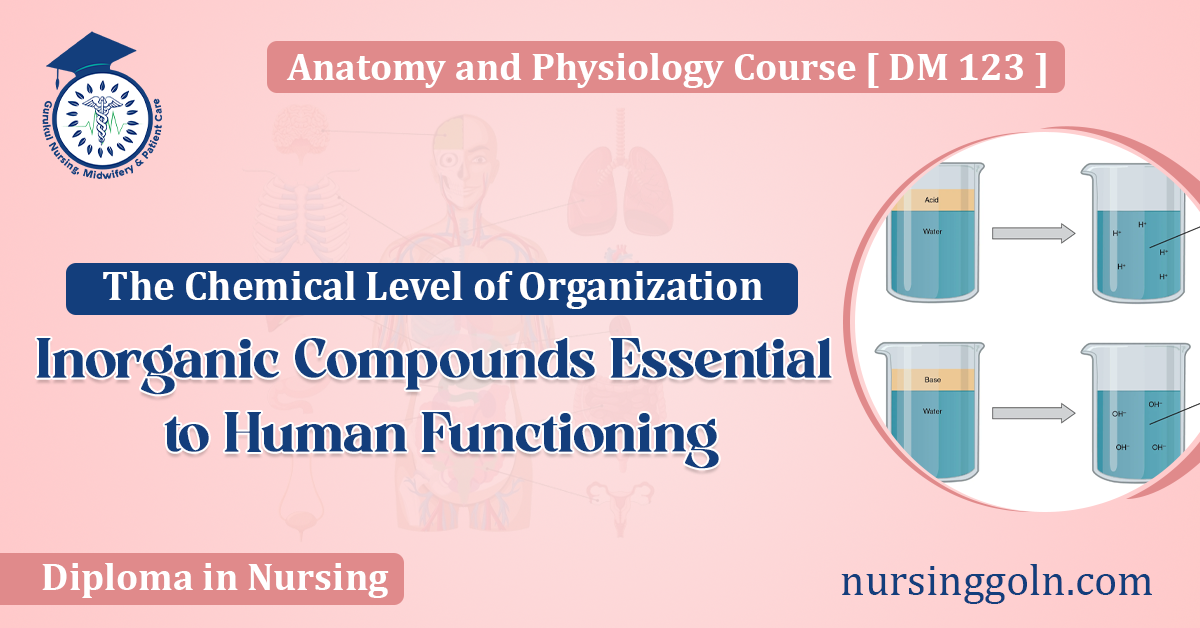When one thinks about the substances vital for the human body, oftentimes it’s the organic compounds like proteins, carbohydrates, lipids, and nucleic acids that come to mind. While these organic molecules indeed play critical roles in our biological systems, it is equally essential to consider the inorganic compounds that contribute significantly to our overall health and functioning. These compounds, although simpler in structure than organic molecules, are the underpinning of many fundamental processes in our bodies.
What is an Inorganic Compound?
To understand the importance of inorganic compounds, it’s essential to first differentiate them from their organic counterparts. Organic compounds are primarily made of carbon atoms bonded to hydrogen, often with oxygen, nitrogen, sulfur, and phosphorus. Examples include glucose (a sugar) and methane (a simple hydrocarbon). In contrast, inorganic compounds do not have a carbon-hydrogen (C-H) bond as a principal feature. Examples of these are salts, metals, and minerals.
1. Water (H2O)
Undoubtedly, water is the most crucial inorganic compound in the human body. Constituting about 60-70% of the body weight of an average adult, water serves multiple functions:
- Solvent: Water is an excellent solvent for many substances, allowing various biochemical reactions to occur in the body.
- Transport: Nutrients, gases, and waste products are transported in bodily fluids primarily made of water, like blood and lymph.
- Temperature Regulation: Due to its high heat capacity, water helps maintain a consistent body temperature by absorbing and releasing heat with minimal temperature change.
- Lubrication: Synovial fluid in joints, cerebrospinal fluid around the brain and spinal cord, and other bodily fluids act as lubricants, reducing friction during movements.
2. Salts
Salts are ionic compounds that dissociate in water into cations (positively charged ions) and anions (negatively charged ions). The body utilizes various salts for a plethora of functions:
- Electrolyte Balance: Sodium (Na+), potassium (K+), calcium (Ca2+), and chloride (Cl-) ions are pivotal for maintaining the electrical balance in and out of cells. This balance aids in transmitting nerve impulses and muscle contractions.
- Bone and Teeth Formation: Calcium phosphate, a type of salt, is a significant component of bones and teeth, providing them with strength and rigidity.
- Blood Clotting: Calcium ions play a key role in the process of blood clotting, preventing excessive bleeding.
3. Oxygen (O2)
Every cell in the human body requires oxygen to produce ATP, the primary energy currency, through the process of cellular respiration. Hemoglobin in red blood cells captures oxygen from the lungs and delivers it to tissues. Without oxygen, cells would not generate enough energy to sustain life.
4. Carbon Dioxide (CO2)
Although often considered a waste product, carbon dioxide plays a significant role in maintaining the acid-base balance in the body. CO2 combines with water in blood to form carbonic acid, helping buffer pH changes. It’s also an indicator for respiration rate: elevated levels of CO2 trigger an increase in breathing.
5. Minerals
Minerals, often taken as dietary supplements, play crucial roles in numerous physiological processes:
- Calcium (Ca): Aside from bone and teeth formation, calcium aids in muscle contractions, nerve transmissions, and blood clotting.
- Iron (Fe): Vital for hemoglobin formation, which carries oxygen in the blood.
- Magnesium (Mg): Participates in protein synthesis, muscle contraction, and nerve transmission.
- Zinc (Zn): Important for wound healing, taste perception, and DNA synthesis.
Acids and Bases
The body’s acid-base balance, often measured by pH, is critical for homeostasis. Acids are proton (H+) donors, while bases are proton acceptors. The human body operates at a slightly alkaline pH of about 7.4. Maintaining this balance is crucial, as slight deviations can lead to severe conditions like acidosis or alkalosis.
Buffer Systems
To maintain the acid-base balance, the body uses buffer systems. These are combinations of weak acids and bases that neutralize excess acids or bases. The bicarbonate buffer system, which involves carbonic acid (H2CO3) and bicarbonate ion (HCO3-), is one such pivotal system in the body.

Significance of Inorganic Compounds in Disease and Therapy
An imbalance or deficiency in inorganic compounds can lead to a variety of diseases and conditions. For instance:
- Electrolyte Imbalances: Can lead to arrhythmias, muscle twitching, and confusion. Such imbalances might arise from kidney disease, dehydration, or certain medications.
- Iron-deficiency anemia: Caused by insufficient iron, leading to reduced oxygen-carrying capacity of the blood.
- Osteoporosis: A condition resulting from calcium and phosphate deficiencies, leading to fragile bones.
On the flip side, understanding inorganic compounds allows for therapeutic interventions. Intravenous saline solutions can restore electrolyte balance, antacids can neutralize excess stomach acid, and mineral supplements can address specific deficiencies.
Conclusion
While the intricate web of life hinges on complex organic molecules, the role of simpler inorganic compounds cannot be overlooked. These compounds lay the foundation for numerous physiological processes, from basic cellular functions to systemic homeostasis. Recognizing the significance of inorganic compounds in human functioning underscores the beauty of life at the chemical level of organization. Whether it’s the water that fills our cells or the minerals that fortify our bones, the importance of these inorganic entities remains paramount.
See more:
